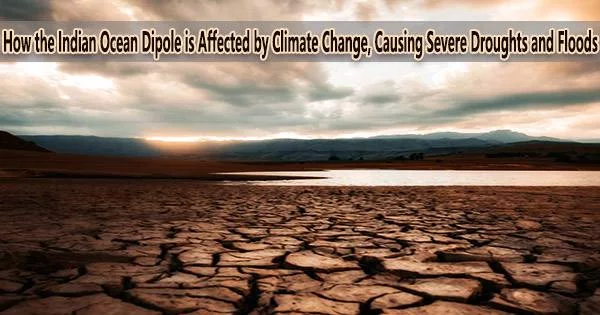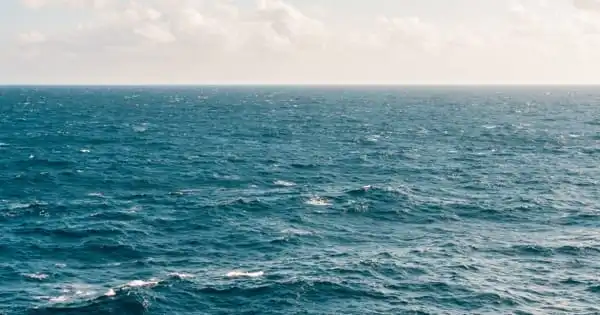Researchers say they now have a better understanding of how climate change can impact and cause sea water temperatures on one side of the Indian Ocean to be so much warmer or cooler than the temperatures on the other, a phenomenon that can lead to weather-related events that can be extremely dangerous, like megadroughts in East Africa and severe flooding in Indonesia.
The investigation, conducted by an international team of experts lead by academics from Brown University, compares simulations from a sophisticated climate model to reconstructions of 10,000 years’ worth of past climate conditions gleaned from various sets of geological data.
The findings show that about 18,000 to 15,000 years ago, as a result of melted freshwater from the massive glacier that once covered much of North America pouring into the North Atlantic, ocean currents that kept the Atlantic Ocean warm weakened, setting off a chain of events in response.
As a result of the system’s eventual breakdown, an atmospheric loop in the Indian Ocean that traps warmer water on one side and cooler water on the other began to strengthen. This unusual weather pattern, known as a dipole, causes widespread drought on one side (either east or west) and above-average rainfall on the other.
Both the model’s simulation and the historical data that the researchers looked at had instances of this pattern. They claim that the discoveries could one day contribute to more accurate drought and flood forecasts in the area, as well as greater understanding of the mechanics underlying the east-west dipole in the Indian Ocean.
“We know that in the present-day gradients in the temperature of the Indian Ocean are important to rainfall and drought patterns, especially in East Africa, but it’s been challenging to show that those gradients change on long time-scales and to link them to long-term rainfall and drought patterns on both sides of the Indian Ocean,” said James Russell, a study author and professor of Earth, environmental, and planetary sciences at Brown. “We now have a mechanistic basis to understand why some of the longer-term changes in rainfall patterns in the two regions have changed through time.”
Greenland is currently melting so fast that it’s discharging a lot of freshwater into the North Atlantic Ocean in ways that are impacting the ocean circulation. The work done here has provided a new understanding of how changes in the Atlantic Ocean circulation can impact Indian Ocean climate and through that rainfall in Africa and Indonesia.
Professor James Russell
The authors of the study, which encompassed the end of the last Ice Age and the beginning of the current geological epoch, describe the mechanisms by which the Indian Ocean dipole developed and the weather-related events it caused.
The water on the western side of the dipole, which borders contemporary East African nations like Kenya, Ethiopia, and Somalia, is cooler than the water on the eastern side, which faces Indonesia, according to the study. They observed that although East Africa saw more drier weather due to the dipole’s cooler ocean temperatures, Indonesia experienced more rainfall.
That fits into what is often seen in recent Indian Ocean dipole events. In October, for example, heavy rain led to floods and landslides in Indonesian islands of Java and Sulawesi, leaving four people dead and impacting over 30,000 people. On the opposite end, Ethiopia, Kenya and Somalia experienced intense droughts starting in 2020 that threatened to cause famine.
The changes the authors observed 17,000 years ago were even more extreme, including the complete drying of Lake Victoria one of the largest lakes on Earth.
“Essentially, the dipole intensifies dry conditions and wet conditions that could result in extreme events like multi-year or decades-long dry events in East Africa and flooding events in South Indonesia,” said Xiaojing Du, a Voss postdoctoral researcher in the Institute at Brown for Environment and Society and Brown’s Department of Earth, Environmental and Planetary Sciences, and the study’s lead author. “These are events that impact people’s lives and also agriculture in those regions. Understanding the dipole can help us better predict and better prepare for future climate change.”
The interplay between the Atlantic Ocean’s heat-transfer mechanism and the Walker Circulation, a tropical Indian Ocean atmospheric loop, resulted in the formation of the dipole under study.
Near the ocean surface, the lower portion of the atmospheric loop travels throughout most of the area from east to west at low altitudes, whereas the top portion travels from west to east at higher altitudes. The higher air and lower air connect in one big loop.
Massive melting of the Laurentide ice sheet that once covered most of Canada and the northern U.S. brought on interruption and weakening of the Atlantic Ocean heat transport, which works like a conveyor belt made of ocean and wind currents.
The melting chilled the Atlantic, causing wind anomalies that increased the activity and amplitude of the atmospheric loop over the tropical Indian Ocean. That then led to increased precipitation in the east side of the Indian Ocean (where Indonesia sits) and reduced precipitation in the west side, where East Africa sits.
The researchers further demonstrate that a lower sea level and the exposure of adjoining continental shelf during the time period they analyzed increased this effect.
The experts believe additional study is required to determine precisely what impact the exposed continental shelf and decreased sea level have on the east-west dipole of the Indian Ocean, but they already have plans to increase the research to address the issue.
While their research into how past glacier melting affects the Indian Ocean dipole and the Atlantic Ocean’s heat transport system won’t be used to forecast future conditions, it may offer important insights into what will happen if more melting is caused by climate change.
“Greenland is currently melting so fast that it’s discharging a lot of freshwater into the North Atlantic Ocean in ways that are impacting the ocean circulation,” Russell said. “The work done here has provided a new understanding of how changes in the Atlantic Ocean circulation can impact Indian Ocean climate and through that rainfall in Africa and Indonesia.”
The National Science Foundation and the Institute at Brown for Environment and Society also provided money for the project.
















